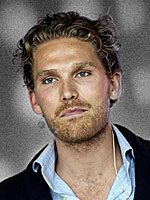How to Find Your Next Superstar

Rasmus Ankersen
One year ago, I did something crazy. I quit my job, purchased several plane tickets and traveled the world for six months, training and living with the world's best athletes and their coaches in an attempt to answer questions like: Why have the world's best middle-distance runners grown up in the same Ethiopian village? Why are 137 of the world's 500 best female golfers from South Korea? What is the secret behind Brazil's mass production of soccer superstars?
These gold mines of world-class performers offer numerous questions, to which the answers can greatly impact the management and success of our businesses. For example: What is talent? How can we identify talent? How is talent grown? And how can we grow it more effectively? As I traveled the globe to crack the code behind the world’s most successful performance hotbeds, I discovered three key lessons regarding the art of identifying real talent:
-
What you see is not necessarily what you get.
Many of today’s best athletes were hardly noticed at first. Just take Asafa Powell, the former world-record holder in the 100 meters. Three years before he smashed the world record, Asafa was just another Jamaican teenager trying to find a place to train. His best time in the 100 meters was 10.8 seconds, and he was rejected by nearly every Jamaican college. Which begs the question: How can you overlook the potential of one of the fastest people on earth?
Well, because great potential doesn’t necessarily manifest itself in current top performance. Let’s say you see two 19-year-olds running the same 100 meters; one runs it in 10.2 seconds, the other in 10.6. If you had to pick an athlete for your team, you’d choose the one who ran a 10.2, right? Not necessarily. If you’re smart, you’ll know that the 10.6 guy may have greater potential. Imagine that the 10.2 athlete came from a professional training environment, while the 10.6 guy trained on his own. As it stands, a raw 10.6 can be significantly better than a trained 10.2. Great talent spotters understand this principle. What’s important is not the performance in itself, but what caused it and the story that lies behind it.
-
If people come with problems, they come with potential.
Great talent discoveries happen only if you’re willing to suspend your idea of something perfect. Real potential does not necessarily look perfect. Shelly Ann-Fraser, the Olympic 100-meter champion, is a great example. At the age of 19, she ran the 100 meters in an unremarkable 11.7 seconds. Shelly always ran well early in her races, but she fell apart technically and lost speed as the race went on. This made her coach think, “Okay, if I can improve her technique and get her to train properly, she will improve drastically!” He succeeded in getting her time down to 10.73 seconds, and the rest is history.
As a leader, you must love weaknesses and see them as opportunities for finding the rare talent that everyone else has overlooked. When you’re looking at an employee, ask yourself two simple questions: “Can I eliminate his or her weakness?” and “Do I have the time to do it?” Remember— if someone comes with problems, they also come with potential.
-
Keep an open mind and adopt a wide view.
The world is full of people who were originally tagged as “unsuitable” because they didn’t conform to some standard size, quality or look, but who nonetheless ended up performing extremely well. Take the Swedish high jumper Stefan Holm, who won Olympic gold in Athens in 2004. What makes Stefan particularly interesting is his height. He’s six-feet tall, which is almost dwarf-like when it comes to the high jump. Despite this, Stefan boasts a personal best of 2.40 meters, and shares the unofficial world record of being able to clear the greatest height above his own height. If Stefan had been judged by the usual standards applied to high jumpers, he would have been rejected almost before he started. He shows how important it is to keep an open mind and not write people off on the basis of mechanistic tests and checklists, a practice that is becoming more rife in talent development the world over.
When I think of the challenges involved in finding the right talent, I think about what Capital One CEO Richard Fairback once said: “At most companies, people spend two percent of their time recruiting and 75 percent managing their recruiting mistakes.” In my experience, the world’s best talent spotters have the courage to focus on people’s underlying character traits and motivations, rather than getting hung up on classic measures of ability.
Rasmus Ankersen is the founder of RFA Performance & Research and a speaker on talent and performance development. Fun fact: Rasmus got his Danish sports ego massively crushed while running with teenage runners in Ethiopia.
